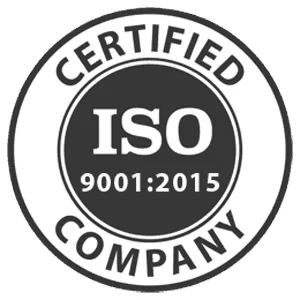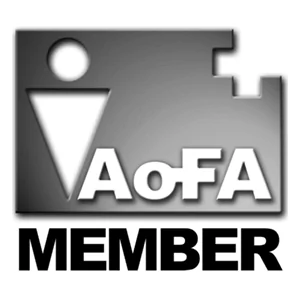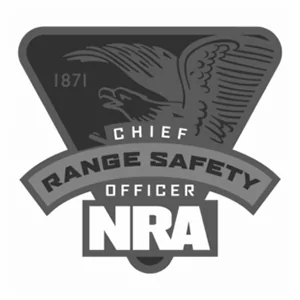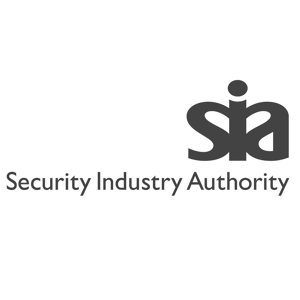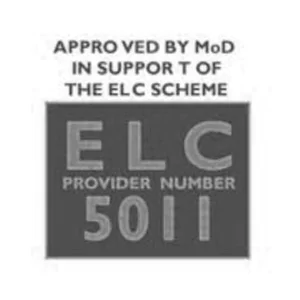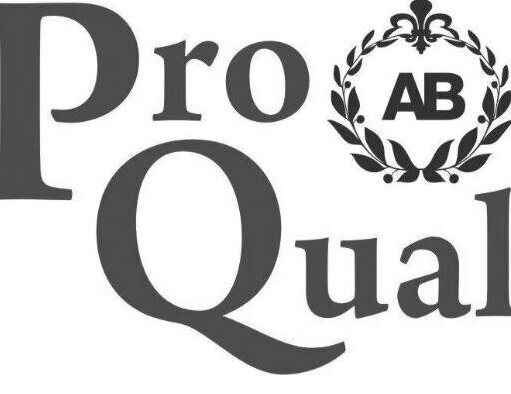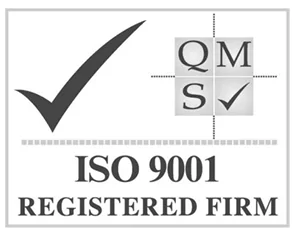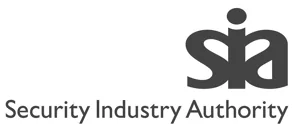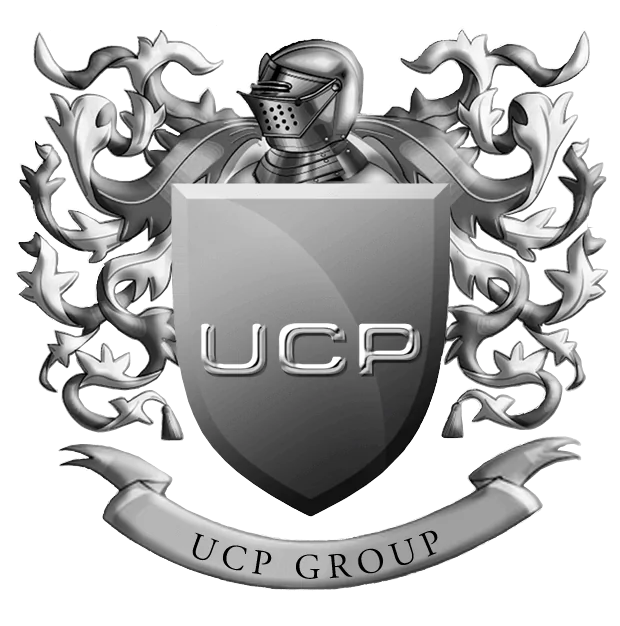COURSE INFORMATION
The Level 6 NVQ Diploma in Occupational Health and Safety Practice qualification is aimed at candidates who are responsible for developing and applying health and safety procedures day-to-day in their organisation. They may be a staff member, supervisor or manager looking to improve their knowledge and skills.
The awarding body for this qualification is ProQual Awarding Body and the regulatory body is the Office of Qualifications and Examinations Regulation (Ofqual). This qualification has been accredited onto the Regulated Qualifications Framework (RQF)
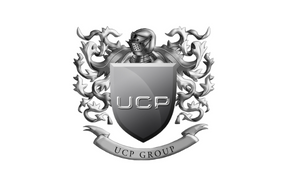
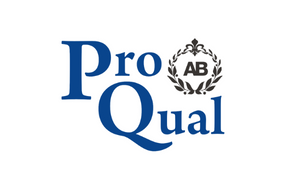
ENTRY REQUIREMENTS
Candidates must have good command of English language(reading & writing)
QUALIFICATION STRUCTURE
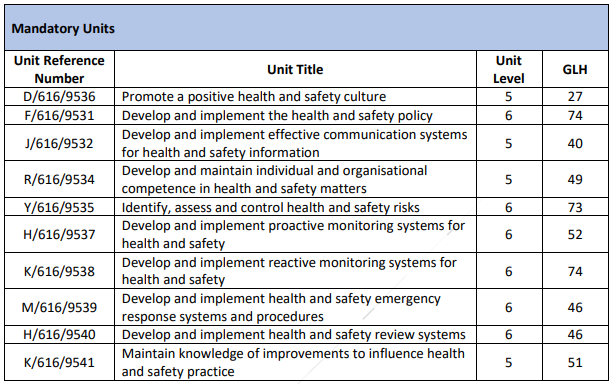
WHAT’S INCLUDED:
- instructor
- Training equipment
- Exams
- Awards
- Classroom
- Range (where applicable)
- Ammo (where applicable)
WHAT IS NOT INCLUDED:
- Accommodation (where applicable)
- Food and beverages
- Flights (where applicable)
- Airport Transfers (where applicable)
- Safety Glasses (where applicable)
- Ear Defenders (where applicable)
Course Cost
£1500
Location
UK, Europe, USA, and Thailand
Course Dates
Any time of the month
Award
ProQual Level 6 NVQ Diploma in Occupational Health and Safety Practice
Assessments
There must be valid, authentic and sufficient for all the assessment criteria. However, one piece of evidence may be used to meet the requirements of more than one learning outcome or assessment criterion.
QUALIFICATION STRUCTURE
Unit D/616/9536
PROMOTE A HEALTH AND SAFETY CULTURE
E
Learning Outcome – The learner will: | Assessment Criterion – The learner can:
1. Be able to advocate commitment to a positive health and safety culture in the organisation.
1.1 Provide sufficient and clear information to people in the organisation about the benefits of a positive health and safety culture.
1.2 Obtain the support of those in the organisation who can promote a positive health and safety culture; tailoring own approach to meet the needs of:
• directors
• managers
• employee representatives.
1.3 Use opportunities to communicate information about a positive health and safety culture.
1.4 Create new opportunities to communicate information about a positive health and safety culture.
1.5 Investigate ways to overcome barriers to change.
2. Be able to develop links with appropriate people and groups on Health and Safety matters.
2.1 Identify the appropriate people and groups with whom to develop links on health and safety matters:
• within the organisation
• external to the organisation.
2.2 Provide support and assistance to the appropriate people and groups identified in
2.3 Use appropriate opportunities to develop additional links with people and groups.
2.4 Plan implementation of opportunities to develop additional links with people and groups.
3. Understand the importance
of promoting a positive health and safety culture within the organisation.
3.1 Describe the nature and role of a positive health and safety culture within the organisation.
3.2 Describe the existing health and safety culture within the organisation.
3.3 Identify how the organisation’s communication system can be utilised to promote the benefits of a positive health and safety culture.
3.4 Identify the people and groups who may be affected by the health and safety process.
3.5 Explain how to engage different individuals and groups in the health and safety process.
3.6 Explain external factors influencing a positive health and safety culture, to include sources of expertise and advice on health and safety matters that are available to inform the planning and decision making process for the organisation.
4. Be able to maintain and record their professional development
4.1 Maintain a personal development portfolio which can contribute to professional bodies’ CPD requirements and which incorporates:
-
-
- an ongoing evaluation of their personal competence
- reflective commentaries on CPD activities
- setting and prioritising realistic goals for professional development
- applying professional ethics in practice
- an appreciation of diversity and inclusivity in workplaces
- sharing personal experiences in professional debate and discussion
-
Unit F/616/9531
DEVELOP AND IMPLEMENT THE HEALTH AND SAFETY POLICY
Learning Outcome – The learner will: | Assessment Criterion – The learner can:
1. Be able to define the statutory and workplace health and safety requirements for the organisation.
1.1 Analyse the structure of the organisation relative to health and safety.
1.2 Advocate the Health and Safety Policy to all key stakeholders in the organisation.
1.3 Assess the existing health and safety systems, policies and procedures in the organisation.
1.4 Evaluate the statutory and workplace health and safety requirements relating to:
• input of products and/or services
• the conversion processes
• output of products and/or services
• inadvertent, unwanted or unnecessary goods, materials and waste of all types
• employees, contractors and others affected by the organisation’s activities.
1.5 Identify those external to the organisation who may be affected by its activities.
2. Be able to develop the Health and Safety Policy.
2.1 Identify deficiencies in the current Health and Safety Policy.
2.2 Identify resource constraints that could affect proposals for change.
2.3 Provide opportunities for key stakeholders to review the revised/new Policy.
2.4 Revise the Health and Safety Policy to remedy deficiencies.
2.5 Formulate the strategy for promoting commitment to the Health and Safety Policy by all those in the organisation.
2.6 Advocate the adoption of the new/improved Health and Safety Policy.
3. Be able to implement the Health and Safety Policy
3.1 Specify the strategy for implementation of the Health and Safety Policy, to include:
• providing support and assistance during the implementation process
• planning effective action in case problems arise during implementation
• providing adequate opportunities for feedback
• responding appropriately to the feedback
• planning the implementation process to ensure minimum disruption.
3.2 Ensure quality management requirements are applied to all
health and safety documentation
4. Know the steps required to develop and implement the Health and Safety Policy.
4.1 Explain the nature and role of the Health and Safety Policy within the organisation.
4.2 Explain the input – conversion – output model of organisational systems.
4.3 Describe how to research the organisation’s current Health and Safety procedures.
4.4 Explain how individual and group motivation will be achieved.
4.5 Explain external factors influencing health and safety e.g. Statutory health and safety requirements and industry best practice.
5. Be able to maintain and record their professional development
5.1 Maintain a personal development portfolio which can contribute to professional bodies’ CPD requirements and which incorporates:
• an ongoing evaluation of their personal competence
• reflective commentaries on CPD activities
• setting and prioritising realistic goals for professional development
• applying professional ethics in practice
• an appreciation of diversity and inclusivity in workplaces
• sharing personal experiences in professional debate and discussion
Unit R/616/9534
DEVELOP AND MAINTAIN INDIVIDUAL AND ORGANISATIONAL COMPETENCE IN HEALTH AND SAFETY MATTERS
Learning Outcome – The learner will: | Assessment Criterion – The learner can:
1. Be able to assess the health and safety competence needs of the organisation.
1.1 Critically analyse the functions, activities, tasks and job roles of the organisation.
1.2 Identify the health and safety competence needs of the functions, activities, tasks and job roles of the organisation.
1.3 Evaluate the health and safety competence needs of:
• the organisation
• individuals in the organisation.
1.4 Address the health and safety competence needs of the organisation.
2. Be able to implement health and safety training to meet identified needs.
2.1 Establish health and safety competencies in the organisation in terms of skills, knowledge and understanding.
2.2 Design and develop training courses to meet health and safety competence needs for given groups and within agreed constraints to include:
• budget
• timescales
• staff availability.
2.3 Deliver suitable training to meet the health and safety needs of individuals and groups in the organisation.
2.4 Monitor the effectiveness of training to make sure that the identified needs have been met.
3. Know how to develop and maintain individual and organisational competence in health and safety matters.
3.1 Critically analyse the nature and role of individual and organisational competence in health and safety matters within the organisation.
3.2 Analyse the structure of the organisation with respect to functions, activities, tasks and jobs.
3.3 Evaluate the principles of competence, activity analysis, task analysis and job safety analysis.
3.4 Explain the relationships between competencies, skills and qualifications.
3.5 Explain the principles of:
• training course design and delivery
• the advantages and disadvantages of different methods of presentation
• course evaluation and validation
• preparing, delivering and marking tests and assignments
• effective written and verbal communication.
3.6 Explain the external factors influencing individual and organisational competence in health and safety:
• Health and safety statutory requirements and industry best practice
• The quality management requirements for documentation.
4. Be able to maintain and record their professional development
4.1 Maintain a personal development portfolio which can contribute to professional bodies’ CPD requirements and which incorporates:
• an ongoing evaluation of their personal competence
• reflective commentaries on CPD activities
• setting and prioritising realistic goals for professional development
• applying professional ethics in practice
• an appreciation of diversity and inclusivity in workplaces
• sharing personal experiences in professional debate and discussion
Unit Y/616/9535
IDENTIFY, ASSESS AND CONTROL HEALTH AND SAFETY RISKS
Learning Outcome – The learner will: | Assessment Criterion – The learner can:
1. Be able to conduct an inspection of the workplace.
1.1 Identify the requirements to carry out a health and safety inspection.
1.2 Inspect the workplace to identify and evaluate hazards.
1.3 Evaluate hazards through observation of work activities.
1.4 Examine proposed activities to identify and evaluate hazards including:
• new workplaces
• new equipment
• new processes
• new activities.
1.5 Select and use appropriate measuring equipment.
1.6 Maintain records of the hazards identified in sufficient detail to meet:
• statutory requirements
• organisational requirements
• industry best practice.
2. Be able to assess risks to health and safety.
2.1 Select appropriate risk assessment methods.
2.2 Conduct a risk assessment of the hazards identified.
2.3 Select and use instruments or methods to determine the level of exposure affecting:
• employees
• others who may be affected.
2.4 Determine risks to health and safety of:
• employees
• others who may be affected.
2.5 Prioritise the health and safety risks to:
• employees
• others who may be affected.
2.6 Maintain records of the risk assessment in sufficient detail to meet:
• statutory requirements
• organisational requirements
• industry best practice.
3. Be able to implement risk control measures and safe systems of work in the organisation.
3.1 Critically analyse the existing risk control measures and current systems of work in the organisation.
3.2 Identify for consideration the risk control measures required by:
• statutory requirements
• organisational requirements
• industry best practice
3.3 Identify any additional or improved risk control measures that may be needed.
3.4 Identify the resources required to implement the risk control measures needed.
3.5 Calculate the cost-effectiveness of the risk control measures needed.
3.6 Consult with managers, employee representatives and employees about risk controls needed.
3.7 Plan the implementation of risk control measures in order of priority.
3.8 Ensure the provision of training for those who need required competences to implement risk control measures.
3.9 Maintain records of the control measures in sufficient detail to meet:
• statutory requirements
• organisational requirements
• industry best practice.
4. Know how to identify, assess and control health and safety risks.
4.1 Evaluate the methods of identification of health and safety hazards within the organisation, including:
• risk assessment methods
• physical resources
• instruments and survey methods which may be used to determine the level of exposure to people who may be affected.
4.2 Evaluate principles of the analysis methods for determining risks.
4.3 Explain external factors influencing the identification of health and safety hazards, including:
• health and safety statutory requirements
• acceptability of risk
• quality management requirements for documentation.
4.4 Evaluate the nature and role of health and safety risk control measures within the organisation.
4.5 Justify health and safety risk control measures, including safe systems of work.
4.6 Explain external factors influencing health and safety risk control methods.
4.7 Evaluate risk control hierarchies
5. Be able to maintain and record their professional development
5.1 Maintain a personal development portfolio which can contribute to professional bodies’ CPD requirements and which incorporates:
• an ongoing evaluation of their personal competence
• reflective commentaries on CPD activities
• setting and prioritising realistic goals for professional development
• applying professional ethics in practice
• an appreciation of diversity and inclusivity in workplaces
• sharing personal experiences in professional debate and discussion
Unit H/616/9537
DEVELOP AND IMPLEMENT PROACTIVE MONITORING SYSTEMS FOR HEALTH
AND SAFETY
Learning Outcome – The learner will: | Assessment Criterion – The learner can:
1. Be able to devise inspection and monitoring systems for health and safety proactive performance monitoring.
1.1 Develop workplace inspection and monitoring systems and procedures to include:
• methodology
• frequency
• compliance with health and safety regulations
• organisational requirements.
1.2 Analyse the competence needs of the people who will carry out the inspection and monitoring in the organisation.
1.3 Plan in conjunction with others the implementation of appropriate inspection and monitoring systems in the organisation.
1.4 Identify any relevant monitoring equipment that may be required.
1.5 Review health and safety statutory records and records initiated by the organisation for proactive performance monitoring.
1.6 Analyse all internal documentation and records to ensure proactive monitoring is appropriately managed.
1.7 Involve managers, employee representatives and employees in health and safety proactive monitoring systems and procedures.
1.8 Maintain appropriate records of health and safety proactive monitoring systems and outcomes.
2. Be able to keep stakeholders informed of health and safety proactive performance monitoring outcome
2.1 Inform directors, senior, line, functional and technical managers, employee representatives and employees of the outcomes of health and safety proactive performance monitoring of the organisation.
2.2 Prepare reports of the outcomes of health and safety proactive performance monitoring of the organisation.
2.3 Interpret to non-specialist audience the outcomes of health and safety proactive performance monitoring of the organisation.
2.4 Propose recommendations based on the outcomes of health and safety proactive performance monitoring of the organisation.
2.5 Respond to the requirements of the regulatory authorities in respect of the outcomes of health and safety proactive performance monitoring of the organisation.
3. Understand how to develop and implement proactive monitoring systems for health and safety.
3.1 Analyse the nature and role of active health and safety monitoring systems within the organisation.
3.2 Present the rationale for proactive monitoring systems for health and safety.
3.3 Describe the whole range of monitoring equipment.
3.4 Explain sampling routines.
3.5 Evaluate the procedure for workplace inspections and activity observations.
3.6 Explain the principles of effective written and verbal communication.
3.7 Explain how to respond to the health and safety needs of others.
3.8 Explain external factors influencing active health and safety monitoring systems:
• health and safety statutory requirements and industry best practice for proactive monitoring systems and documentation.
• quality management requirements for documentation.
4. Be able to maintain and record their professional development
4.1 Maintain a personal development portfolio which can contribute to professional bodies’ CPD requirements and which incorporates:
• an ongoing evaluation of their personal competence
• reflective commentaries on CPD activities
• setting and prioritising realistic goals for professional development
• applying professional ethics in practice
• an appreciation of diversity and inclusivity in workplaces
• sharing personal experiences in professional debate and discussion
Unit H/616/9538
DEVELOP AND IMPLEMENT REACTIVE MONITORING SYSTEMS FOR HEALTH AND
SAFETY
Learning Outcome – The learner will: | Assessment Criterion – The learner can:
1. Be able to develop a health and safety loss event reporting and recording system.
1.1 Identify health and safety loss events.
1.2 Devise health and safety loss event reporting forms.
1.3 Develop the health and safety loss event reporting and recording procedure.
1.4 Plan the implementation of the health and safety loss event reporting and recording procedure.
1.5 Maintain records of the health and safety loss events.
1.6 Develop a system to report health and safety loss events to the regulatory authorities.
2. Be able to implement health and safety loss event investigation systems and procedures.
2.1 Identify which health and safety loss events require a formal investigation.
2.2 Plan the implementation of health and safety loss event investigation systems and procedures.
2.3 Implement health and safety loss event investigation systems and procedures.
2.4 Investigate health and safety loss events.
2.5 Identify directors, senior, line, functional and technical managers, employee representatives and employees in order to:
• advise them about the risk assessments that need to be reviewed in the light of health and safety loss event investigations
• advise them of the possible breaches of statutory and common law requirements following health and safety loss event investigations.
2.6 Manage the implementation of recommendations arising from health and safety loss event investigations.
2.7 Keep records of health and safety investigations.
3. Be able to conduct statistical and epidemiological analyses
3.1 Produce statistical and epidemiological analyses of the health and safety loss event data in the organisation in order to:
• present it in numerical and graphical format
• interpret statistical and epidemiological analyses
• present to directors, senior, line, functional and technical managers, employee representatives and employees in a meaningful way.
3.2 Keep records of health and safety loss event statistical and epidemiological analyses
4. Be able to maintain communication with stakeholders of health and safety reactive performance monitoring outcomes.
4.1 Inform directors, senior, line, functional and technical managers, employee representatives and employees of the outcomes of health and safety reactive performance monitoring.
4.2 Prepare written and verbal reports of the outcomes of health and safety reactive performance monitoring.
4.3 Interpret to a lay audience the outcomes of health and safety reactive performance monitoring.
4.4 Select appropriate recommendations based on the outcomes of reactive performance monitoring.
4.5 Comply with the requirements of the regulatory authorities in respect of the outcomes of health and safety reactive performance monitoring.
5. Understand how to develop and implement reactive monitoring systems for health and safety.
5.1 Evaluate the nature and role of reactive health and safety monitoring systems within the organisation.
5.2 Critically analyse health and safety loss events that require formal investigation in relation to:
• types
• causes
• impacts
• systems and procedures.
5.3 Explain reporting and recording procedures for health and safety loss events.
5.4 Explain principles of:
• fault-tree analysis
• events and causal factors analysis
• effective written and verbal communication
• how to respond to the needs of others
• statistical and epidemiological analyses of data, including the use of the normal and poisson distribution
• histograms, pie charts, cusum charts and line graphs.
5.5 Explain external factors influencing reactive health and safety monitoring systems and investigations.
5.6 Explain health and safety statutory and common law requirements regarding loss events
6. Be able to maintain and record their professional development
6.1 Maintain a personal development portfolio which can contribute to professional bodies’ CPD requirements and which incorporates:
• an ongoing evaluation of their personal competence
• reflective commentaries on CPD activities
• setting and prioritising realistic goals for professional development
• applying professional ethics in practice
• an appreciation of diversity and inclusivity in workplaces
• sharing personal experiences in professional debate and discussion
Unit H/616/9539
DEVELOP AND IMPLEMENT HEALTH AND SAFETY EMERGENCY RESPONSE
SYSTEMS AND PROCEDURES
Learning Outcome – The learner will: | Assessment Criterion – The learner can:
1. Be able to develop health and safety emergency response procedures.
1.1 Identify the potential sources of an emergency in the organisation.
1.2 Evaluate the organisation’s ability to provide the required:
• first aid provision
• adequate medical provision
• firefighting provision, on-site and off-site.
1.3 Ensure that there are the necessary competencies in first aid and firefighting in the organisation.
1.4 Involve managers, employee representatives and employees in the production of emergency procedures.
1.5 Develop health and safety emergency response procedures for the organisation, taking into account:
• health and safety statutory requirements with respect to the control of an emergency
• methods of effective communication both on-site and off-site
• dealing with both on-site and off-site emergencies
• dealing with the ongoing consequences of fatalities
• injury accidents
• dangerous occurrences
• fires and explosions
• toxic releases
• major disasters
• environmental impact
• rescue and security alerts.
1.6 Keep adequate records of the health and safety emergency response procedures of the organisation.
1.7 Prepare to respond to the requests of the regulatory and local authorities, the emergency services, other authorities, the media and other interested parties regarding an emergency in the organisation.
1.8 Devise a plan to implement the emergency response procedures.
2. Be able to implement procedures for the control of a health and safety emergency.
2.1 Confirm that sufficient facilities, materials and equipment, including communication equipment, are available to deal with the control of an emergency in the organisation.
2.2 Provide detail in the procedures of the competencies required.
2.3 Communicate the plan to all appropriate people in the organisation.
2.4 Establish effective liaison with the appropriate emergency services and the regulatory and local authorities.
2.5 Respond to the requests of the regulatory and local authorities and where necessary, the requests of the media and other interested parties.
2.6 Confirm that the investigation procedure has been carried out.
2.7 Maintain records of the procedures for the control of a health and safety emergency in the organisation
3. Understand how to develop and implement health and safety emergency response systems and procedures.
3.1 Explain the nature and role of health and safety emergency response systems and procedures within the organisation.
3.2 Explain the organisation’s emergency response procedures.
3.3 Explain the organisation’s simulated emergency response procedures.
3.4 Explain the principles of press releases and media management.
3.5 Explain the external factors influencing health and safety emergency response systems and procedures.
3.6 Explain the health and safety statutory requirements for:
• emergency response procedures
• first aid and medical service provision
• fire precautions
• major disasters
• ionising radiation incidents
• environmental impact events.
4. Be able to maintain and record their professional development
4.1 Maintain a personal development portfolio which can contribute to professional bodies’ CPD requirements and which incorporates:
• an ongoing evaluation of their personal competence
• reflective commentaries on CPD activities
• setting and prioritising realistic goals for professional development
• applying professional ethics in practice
• an appreciation of diversity and inclusivity in workplaces
• sharing personal experiences in professional debate and discussion
Unit H/616/9540
DEVELOP AND IMPLEMENT HEALTH AND SAFETY REVIEW SYSTEMS
Learning Outcome – The learner will: | Assessment Criterion – The learner can:
1. Be able to investigate the efficiency and cost effectiveness of health and safety management systems.
1.1 Analyse each part of the health and safety management system.
1.2 Define the factors and features that are essential for the effective working of each part of the health and safety management system.
1.3 Define the review frequency of each part of the health and safety management system.
1.4 Advise directors, senior, line, functional and technical managers of any improvements required to the efficient and cost-effective working of each part of the health and safety management system.
1.5 Plan the implementation of changes to each part of the health and safety management system.
1.6 Maintain records of the review of each part of the health and safety management system.
2. Be able to confirm that each part of the health and safety management system is working as intended.
2.1 Analyse all components of the health and safety management system.
2.2 Define the factors and features that are essential for the effective working of the health and safety management system.
2.3 Define the review frequency of the health and safety management system.
2.4 Assess the efficiency and cost-effectiveness of the health and safety management system.
2.5 Develop changes to improve the efficiency and costeffectiveness of the health and safety management system.
2.6 Manage the implementation of any necessary changes to the health and safety management system.
2.7 Maintain records of the review of the health and safety management system.
3. Be able to confirm that the entire health and safety system is working as intended.
3.1 Assess the nature and role of health and safety review systems within the organisation.
3.2 Describe the organisation’s health and safety management system.
3.3 Define the factors and features that are essential for the efficient and cost-effective working of a health and safety management system.
3.4 Assess the efficiency and cost-effectiveness of a health and safety management system.
3.5 Explain the principles of:
• electronic and paper record systems
• how to respond to the health and safety needs of others.
3.6 Analyse external factors influencing health and safety review systems, to include:
• health and safety statutory requirements
• industry best practice
• quality requirements for documentation.
4. Be able to maintain and record their professional development
4.1 Maintain a personal development portfolio which can contribute to professional bodies’ CPD requirements and which incorporates:
• an ongoing evaluation of their personal competence
• reflective commentaries on CPD activities
• setting and prioritising realistic goals for professional development
• applying professional ethics in practice
• an appreciation of diversity and inclusivity in workplaces
• sharing personal experiences in professional debate and discussion
Unit H/616/9541
MAINTAIN KNOWLEDGE OF IMPROVEMENTS TO INFLUENCE HEALTH AND SAFETY
PRACTICE
Learning Outcome – The learner will: | Assessment Criterion – The learner can:
1. Be able to identify new developments in health and safety.
1.1 Evaluate sources of information and advice on the latest developments in health and safety.
1.2 Evaluate the impact on the organisation of developments in health and safety legislation, policies and practices.
1.3 Advocate the adoption in the organisation of new developments in health and safety matters.
1.4 Contribute to professional technical groups to enhance the development of health and safety.
2. Be able to influence colleagues on health and safety matters.
2.1 Identify opportunities to participate in professional discussions and reviews on best practice in health and safety matters.
2.2 Contribute to groups and committees engaged in developing health and safety practice.
2.3 Influence the policies and practices of professional organisations and groups on health and safety matters.
2.4 Critically analyse health and safety best practice with colleagues through meetings, publications, conferences and other methods.
2.5 Influence colleagues and others on health and safety matters.
2.6 Advocate to colleagues the adoption of industry best practice.
3. Know how to maintain knowledge of improvements in health and safety practice.
3.1 Explain the nature and role of improvements in health and safety practice within the organisation and how they can impact on the business.
3.2 Evaluate print-based and electronic sources of information and advice on health and safety matters.
3.3 Explain principles of:
• effective written and verbal communication
• electronic means of communication.
3.4 Explain external factors influencing improvements in health and safety practice:
• professional, non-professional and technical groups
• professional organisations.
4. Be able to maintain and record their professional development
4.1 Maintain a personal development portfolio which can contribute to professional bodies’ CPD requirements and which incorporates:
• an ongoing evaluation of their personal competence
• reflective commentaries on CPD activities
•setting and prioritising realistic goals for professional development
• applying professional ethics in practice
• an appreciation of diversity and inclusivity in workplaces
• sharing personal experiences in professional debate and discussion


